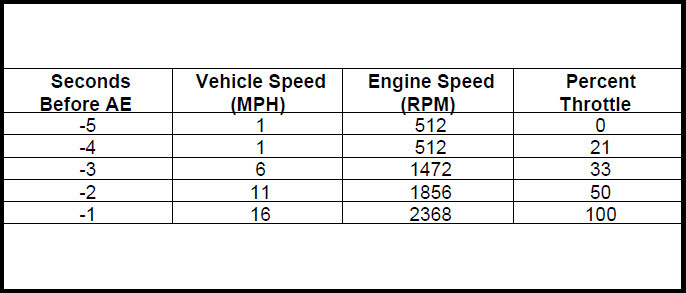Posted on August 25th, 2016
Crash Avoidance Technology: Helping Investigators Understand Crashes
Technology surrounding automotive safety is being implemented today with the obvious intention to minimize collisions and improve crash avoidance. While completely autonomous vehicles are in development by many manufacturers, safety improvements in current vehicle systems are being introduced every year. Taking all of this new technology into consideration can change the approach of the accident reconstructionist.
Examples of new automotive safety and crash avoidance technologies include:
- Lane departure warning
- Obstacle detection
- Automatic emergency braking
- Blind spot detection
- Pedestrian detection
- Curve speed warning
- Drowsiness alert
- And rollover protection systems
Three main categories are taken into consideration when performing crash reconstruction and investigations: Human, Environment, and Vehicle. The Human and Environment categories are variables that factor into crash investigations. The Vehicle category, however, has many avenues to explore as it relates to what happened to the vehicle itself during an incident.
Event Data Recorder (EDR) is the generic name for the Airbag Control Module (ACM) that is installed in vehicles with airbags. The ACM in a passenger vehicle is commonly thought of as the “black box” of an automobile, much like the term used in aviation incidents. However, the vehicle versions of these systems are completely different. Aviation black boxes continuously record all flight information from the time the flight begins. A vehicle ACM, however, only records data and limited information in the event of a crash, which can include up to five seconds of information prior to the crash.
During an airbag event, or other significant event sensed by the vehicle, the ACM is enabled and begins to record and store information. Most vehicle manufacturers allow access to the ACM utilizing a system designed specifically for downloading the information recorded during these events and generates a report highlighting certain aspects of the incident.
The EDR download and report analysis is only one tool to enhance crash reconstruction. Additional vehicle information would also include: skid marks, structural damage (crush), point of impact location, and vehicle final rest positions. When utilized, the EDR download report would supplement traditional accident reconstruction calculations.
What the EDR records
A typical EDR output report includes many things. The first portion of the report includes the basic vehicle information, and any limitations that the reconstructionist needs to take into consideration. Some of the information includes vehicle speed leading up to and including impact; seat belt status (were the passenger belts fastened); brake and accelerator pedal position; and the crash severity (known as Delta-v).
In 2012, federal regulations were put in place outlining the minimum amount and type of information required to be recorded for vehicles that were equipped with an EDR system. This set the foundation for much more consistency across most vehicle manufacturers.
These same minimum requirements, as it relates to the safety technologies, also include:
- Anti-lock braking system (ABS) activity – Was it functional and activated during the event?
- Stability control status – Was it on or off?
- Steering input – Were any evasive maneuvers undertaken?
- Roll angle – Did the vehicle roll during the collision?
Some manufacturers go above the minimum requirements and record more information including:
- Pedestrian protection – Was the system turned on?
- Cruise control status – Was the cruise on at the time of the crash?
- Rollover protection system – Did the crash involve a rollover event?
The future of vehicle safety technology
There are many other vehicle systems that could be accessed in the future. Most new safety systems involve utilizing a computer module which potentially allows EDRs to access the information following an airbag deployment. It is likely this information would be useful for crash investigations.
One example of additional information would be recording and accessing data transmitted from a drowsiness alert system. If this information could be included in an EDR download, it could assist in determining what led up to, and possibly caused, the collision. As more safety technology is implemented in new vehicles, allowing access to this information can benefit an accident investigation. The more data available will help support opinions and conclusions on how and why a crash happened.
In addition to benefiting crash reconstruction investigations, if an incident is related to a vehicle system defect, or improper performance, the information from the new systems described in this article could also be used by vehicle manufacturers to continue to improve vehicle safety. In the end, the intent is to continue to improve vehicle safety, and reduce the number of crashes on the road today.
Editor’s Note:
The term “accident reconstructionist” is widely used to identify individuals who investigate and reconstruct vehicle crashes. When not referring to the discipline of accident reconstruction, the National Safety Council and University of Iowa typically use the terms crash or collision in place of accident.






 MyCarDoesWhat
MyCarDoesWhat